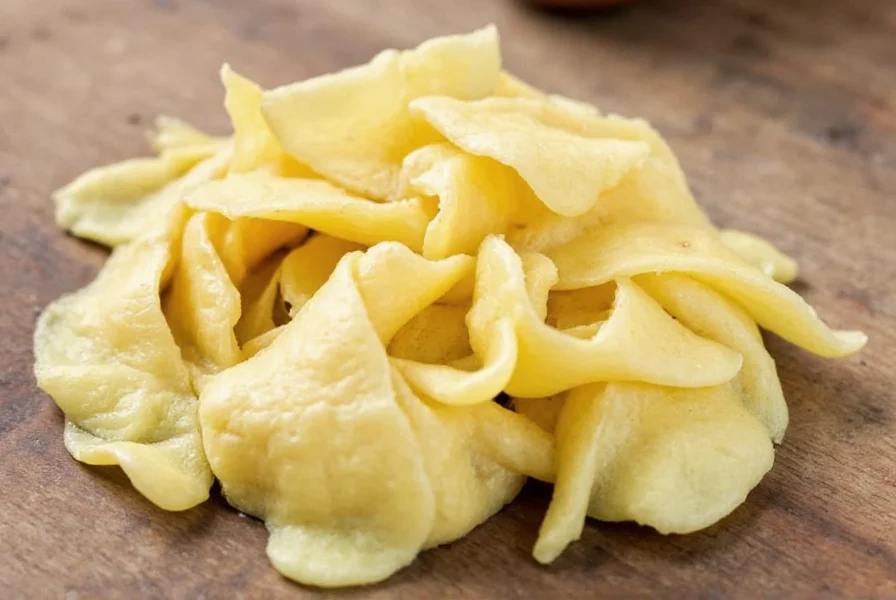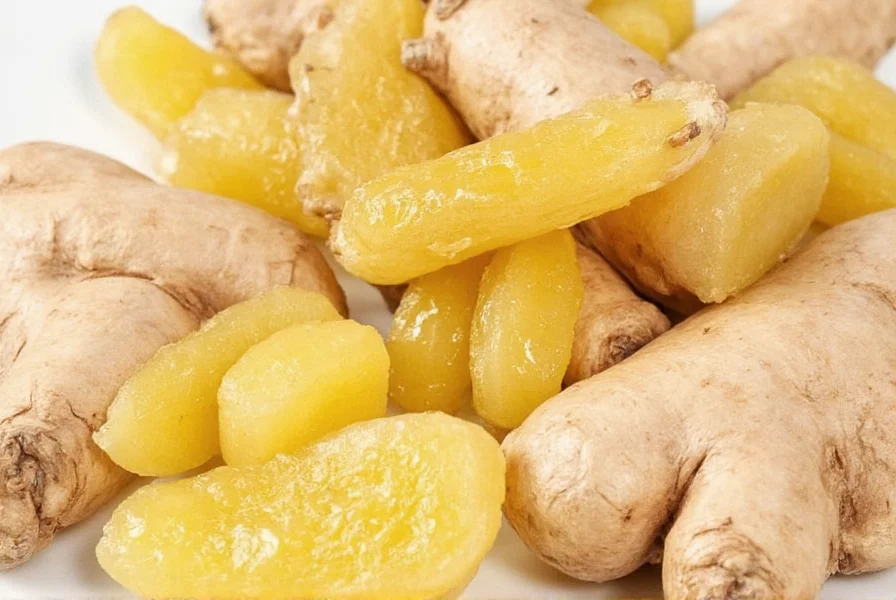Freezing root ginger is not only possible but highly recommended for home cooks and professional chefs alike who want to maintain a steady supply of this versatile ingredient. Unlike many preservation methods that compromise flavor or texture, freezing actually enhances certain culinary applications of ginger while extending its usable life dramatically.
Why Freezing Outperforms Other Ginger Storage Methods
When comparing preservation techniques, freezing root ginger offers distinct advantages over refrigeration, drying, or candying. Refrigerated ginger typically lasts only 2-3 weeks before developing mold or becoming fibrous. Dried ginger loses its fresh, zesty qualities, while candied versions add unnecessary sugar. Freezing preserves ginger's essential oils and pungent compounds without altering its fundamental character.
Food science research shows that freezing ginger actually breaks down cell walls, making the root softer after thawing but surprisingly easier to work with. This structural change means frozen ginger can be grated directly from the freezer without thawing—a significant time-saver in meal preparation. The enzymatic activity that causes ginger to deteriorate at room temperature effectively stops at freezing temperatures.
Three Proven Methods for Freezing Root Ginger
Depending on your cooking habits and kitchen setup, different freezing approaches may suit your needs. Each method maintains ginger's quality while optimizing for specific culinary applications.
Method 1: Whole Piece Freezing (Best for Long-Term Storage)
This approach works well for unpeeled ginger rhizomes you've just purchased. Simply wipe the ginger clean with a dry cloth, place in an airtight freezer bag with excess air removed, and freeze. The unbroken skin creates a natural barrier against freezer burn. This method preserves ginger for 5-6 months with minimal quality degradation.

Method 2: Pre-Grated Freezing (Best for Convenience)
For immediate culinary use, grate fresh ginger directly onto a parchment-lined tray, freeze the grated portions until solid (about 2 hours), then transfer to labeled freezer containers. This technique, often called the how to freeze ginger in ice cube trays method, lets you grab precise amounts for recipes without thawing. Each cube typically contains one tablespoon of ginger—perfect for smoothies, marinades, or stir-fries.
Method 3: Sliced or Chunked Freezing (Best for Tea and Simmered Dishes)
Cut ginger into 1/4-inch slices or 1-inch chunks, freeze on a tray, then store in portion-sized bags. This best way to store ginger in freezer for tea preparation allows you to drop frozen pieces directly into boiling water. The slices maintain their integrity during slow cooking but become tender enough to eat in soups and stews.
Storage Duration and Quality Preservation
Understanding how long ginger lasts in the freezer helps prevent waste and ensures optimal flavor. The following table shows expected quality timelines based on preparation method:
| Preparation Method | Optimal Use Period | Quality Indicators After 6 Months |
|---|---|---|
| Whole unpeeled | 5-6 months | Slight texture change, full flavor retention |
| Pre-peeled chunks | 3-4 months | Moderate moisture loss, good flavor |
| Grated/frozen cubes | 2-3 months | Some flavor diffusion, excellent for cooking |
Regardless of method, always label containers with preparation dates. Vacuum sealing extends storage life by 25-30% compared to standard freezer bags. For best results in preserving ginger's volatile compounds, maintain freezer temperature at 0°F (-18°C) or lower.
Using Frozen Ginger Without Thawing
One of the most valuable techniques home cooks can master is using frozen ginger directly in recipes. The frozen ginger vs fresh ginger difference disappears during cooking, but frozen ginger offers unique advantages:
- Grating efficiency: Frozen ginger becomes harder, allowing finer grating with less effort
- Moisture control: Frozen ginger releases less liquid when grated, preventing recipe dilution
- Flavor preservation: Essential oils remain more stable during the grating process
For baking or beverages, drop frozen ginger pieces directly into mixtures—their cold temperature won't significantly affect batter consistency. In stir-fries, add frozen ginger at the beginning of cooking to allow gradual flavor release as it thaws.
Common Freezing Mistakes to Avoid
Even experienced cooks sometimes make errors when freezing ginger without peeling properly. Watch for these pitfalls:
- Moisture exposure: Never freeze wet ginger—always dry thoroughly first
- Temperature fluctuations: Frequent freezer door openings cause ice crystal formation
- Container issues: Using non-freezer-safe containers leads to flavor absorption
- Over-preparation: Peeling before freezing increases oxidation and moisture loss
Contrary to popular belief, does freezing ginger destroy nutrients is largely a myth. While some water-soluble vitamins may degrade slightly, the gingerol compounds responsible for ginger's characteristic flavor and health benefits remain stable during freezing. Research published in the Journal of Food Science shows frozen ginger retains 92-95% of its active compounds after 6 months.
Thawing Techniques for Specific Applications
While many recipes work best with frozen ginger added directly, certain applications require partial or complete thawing:
- For raw applications: Thaw overnight in the refrigerator for salads or garnishes
- For juicing: Partially thaw until outer layer softens, then juice immediately
- For pickling: Thaw completely and pat dry to ensure proper brine absorption
Never use microwave thawing for ginger intended for raw consumption, as it creates uneven texture and partial cooking. Room temperature thawing takes 30-45 minutes for small pieces but risks bacterial growth if left too long.
Comparing Freezing to Alternative Storage Methods
Understanding when freezing outperforms other techniques helps optimize your ginger preservation strategy:
- Refrigeration: Lasts 2-3 weeks but develops mold faster; best for immediate use
- Drying: Creates concentrated flavor but loses fresh characteristics; requires rehydration
- Vinegar preservation: Alters flavor profile significantly; good for specific recipes only
- Freezing: Maintains original flavor profile with minimal changes; longest shelf life
Professional chefs increasingly prefer the how to freeze fresh ginger root method because it preserves the ingredient's versatility. Unlike dried or candied versions that work only in specific dishes, frozen ginger adapts to virtually any culinary application from savory curries to sweet baked goods.

Practical Applications in Everyday Cooking
Once you've mastered using frozen ginger in recipes, you'll discover unexpected efficiencies. Frozen ginger works particularly well in:
- Smoothies: Adds refreshing zing without diluting the drink
- Marinades: Releases flavor gradually during extended marinating
- Baking: Maintains structural integrity in doughs and batters
- Teas: Infuses flavor directly in hot water without straining
For curry pastes and spice blends, frozen ginger integrates more smoothly than fresh because its partially broken cell structure releases oils more readily. Many professional kitchens now keep ginger exclusively in the freezer for these practical advantages.
Frequently Asked Questions
Does freezing ginger affect its flavor or potency?
Freezing preserves ginger's flavor and potency remarkably well. Research shows frozen ginger retains 92-95% of its active compounds (gingerols) for up to 6 months. The freezing process actually breaks down cell walls, making the flavor compounds more accessible during cooking. Many chefs find frozen ginger releases flavor more readily than fresh in cooked dishes.
Do I need to peel ginger before freezing it?
Peeling before freezing is unnecessary and actually counterproductive. The skin protects against freezer burn and moisture loss. For best results, freeze ginger unpeeled, then grate directly through the skin when needed. The skin becomes brittle when frozen and grates easily without affecting texture or flavor in cooked dishes.
How long can I keep ginger in the freezer?
Properly stored ginger maintains optimal quality for 5-6 months in the freezer. Whole unpeeled pieces last longest (5-6 months), while pre-cut chunks remain good for 3-4 months, and grated ginger portions are best used within 2-3 months. Vacuum sealing extends these timeframes by 25-30%. Always label containers with preparation dates for best results.
Can I use frozen ginger directly in recipes without thawing?
Yes, and this is actually recommended for most cooking applications. Frozen ginger grates more finely and releases flavor gradually as it thaws during cooking. For stir-fries, soups, and baked goods, add frozen ginger directly to the recipe. Only raw applications like salads or garnishes require complete thawing beforehand.
What's the best container for freezing ginger?
The best containers are airtight freezer bags with excess air removed or vacuum-sealed packages. For grated ginger, ice cube trays covered with plastic wrap then transferred to containers work well. Avoid glass containers that might crack from moisture expansion. Always use containers specifically labeled 'freezer-safe' to prevent flavor absorption and freezer burn.










 浙公网安备
33010002000092号
浙公网安备
33010002000092号 浙B2-20120091-4
浙B2-20120091-4